The Sak Yant or the Holy Tattoo by the Buddhist Monks
The Sak Yant is a tattoo which was designed by the Buddhist monks from the former Khmer Empire and spread to Thailand, Cambodia, southern Laos and Vietnam. These tattoos were especially reserved for the warriors and had the virtue of bringing strength, power and wealth, and even invincibility to its bearers... Indeed, during the process, the tattoo monks pronounce the rituals and mantras so that it will penetrate into the blood at the same time as the indelible ink on the pattern.
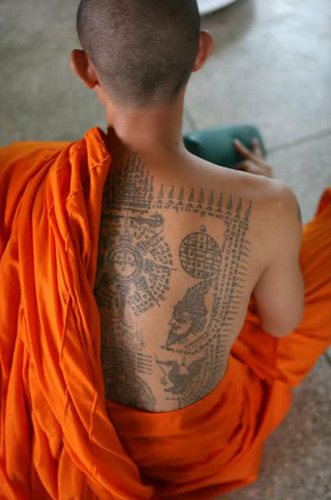
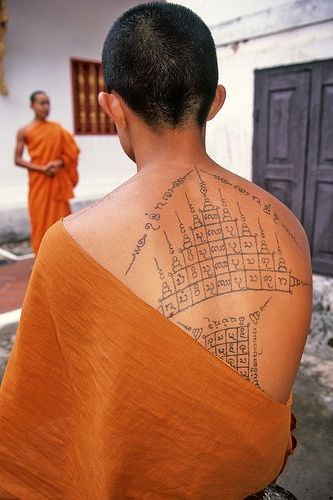
Young monks with tattoos on their back.
Unique Designs Chosen by the Monk
You do not choose the pattern. It is the tattoo artist who chooses it for you, according to your personality, aspirations and aura. The pattern corresponds to a specific type of protection chosen especially for you - your health, wealth, strength, luck, charm, etc.
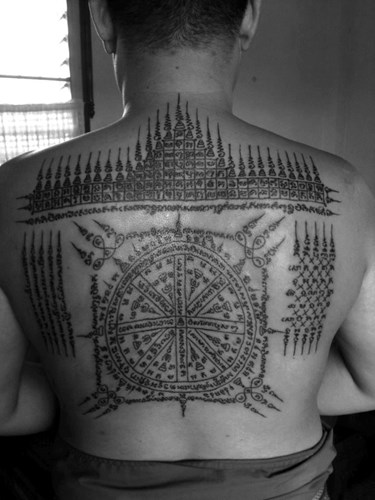
Originally, tattoos are done using a long sharpened bamboo rod with a needle to deposit the ink in the dermis. Today, the techniques have evolved - it is still possible to request for the bamboo technique, but most tattoos are now done with a metal rod or electronic gun.
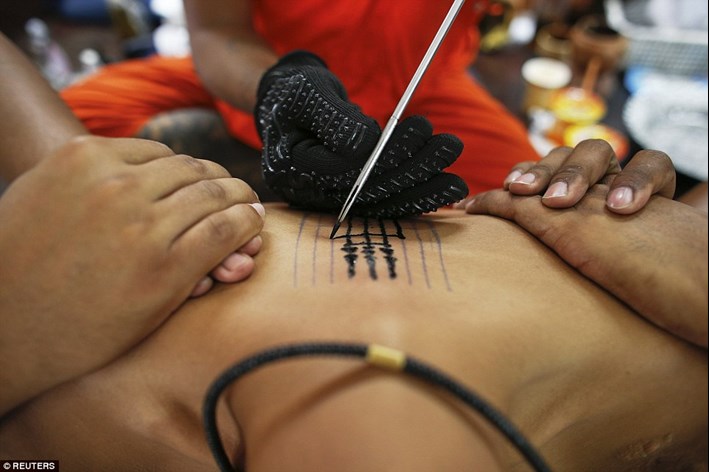
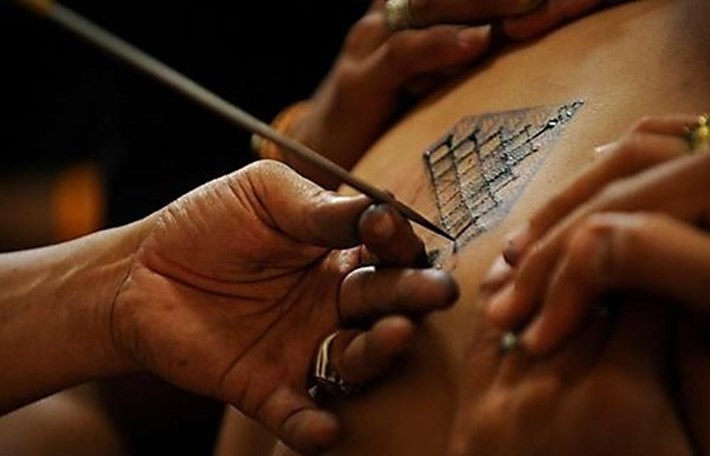
Realisation of a Sak Yant with a metal rod.
A Ritual More than a Tattoo Session
During and after the process, the monk recites many prayers, sing songs and mantras, whose magical power, according to Buddhist beliefs, will impregnate the tattoo patterns and remain on the skin of the person for the rest of his life. There are different rites that exist- in some temples, the ceremony is intimate - the monk sprinkles with a mist of incense, the tattoo, face, hair of the new tattooed person, surrounded by idolatrous images with the light of the candle. In others temples, the person next in line to the one being tattooed will assist the monk by holding the one receiving the tattoo. In turn, he will be held by the person after him, and so on.
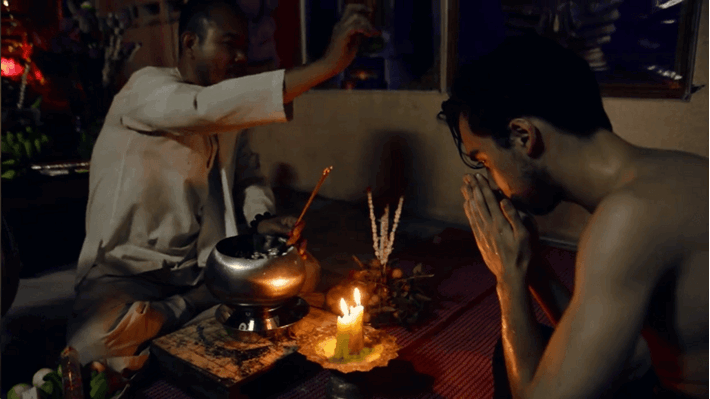
Blessing ceremony after the tattoo. Photo credit: jamaisvulgaire.com
Sak Yant Protects the Tatooed Person from Bad Karma
Tattoos usually represent Buddhist gods or sacred animals. For example, the recurrent images are tigers, dragons, Garuda (the half-human-half-bird god), Hanuman deity and other symbols such as: Yant Gao Yord, Yant Ha Taew, etc..., each with its own specific power. If the tattooed person respects some basic rules (do not kill, do not steal, do not lie, do not cheat), he will be protected from bad karma throughout his life.
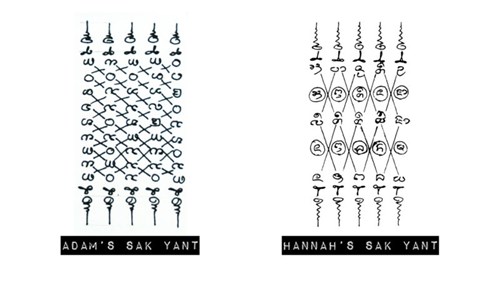
The Sak Yant is the most common and best known Khmer tattoo. Each column has its own power and protection: the first one keeps enemies away, the second push bad karma away, the third one black magic, the fourth brings luck, success and fortune, and the last one brings seduction and charm.
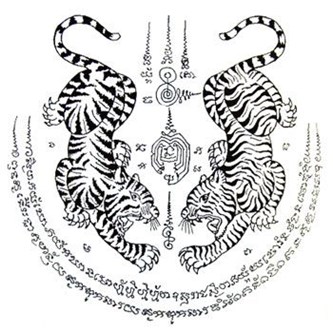

The tigers (left) bring strength and keep away fear and doubt. Garuda (right) is a symbol of royalty and power.

The meaning of the "Yant Gao Yord" is particularly strong: the center represents the Universe and the nine peaks the nine paths to reach Nirvana.
Where to get a tattoo by monks in respect of the tradition?
In Thailand, you can go to Wat Bang Phra Monastery where young monks perform this art every day. This ancestral tradition has almost vanished in Cambodia because of the Pol Pot dictatorship and the bloody Khmer Rouge regime (seeking to eliminate the Buddhist art and religion from the country), however you can still head to the Cambodian countryside around Siem Reap to find monks for a more intimate ritual.
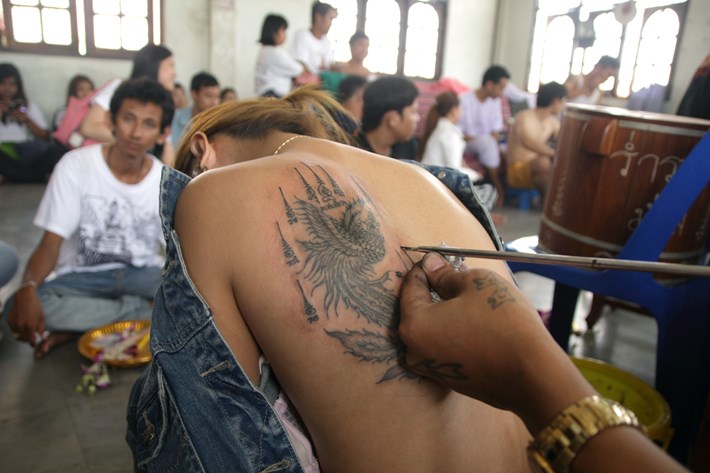
Realization of a tattoo at Wat Bang Phra Temple in Thailand.
Preserving the Sacredness of Sak Yan
In Thailand, any tattoo shop offers the Sak Yant tattoo, done by the monks or not, in response to the increase of the demand and to the Western trend for these patterns, but at the cost of the ancestral Buddhist beliefs and rituals that originally inspired this art.
Therefore, beyond the artistic aspect, these tattoos are above all symbolic. Thus, in order to preserve the Khmer culture and spiritual power of Say Yant, the local associations are fighting against the desecration of these patterns and against tatooing by non-monk tattoo artists.
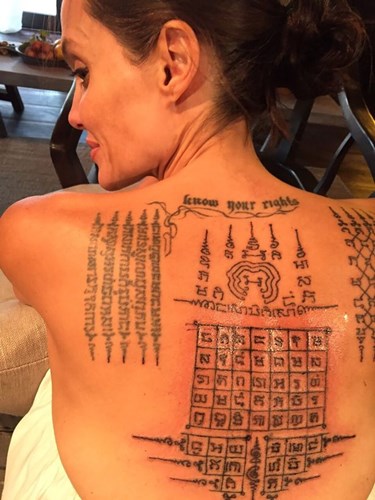
Angelina Jolie, a Hollywood actress and Buddhist, introduced the Yank Sat to the general public.








